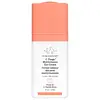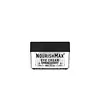What's inside
What's inside
 Key Ingredients
Key Ingredients

 Benefits
Benefits

 Concerns
Concerns

 Ingredients Side-by-side
Ingredients Side-by-side

Water
Skin ConditioningGlycerin
HumectantDicaprylyl Carbonate
EmollientCetearyl Alcohol
EmollientCaprylic/Capric Triglyceride
MaskingHydroxyethyl Acrylate/Sodium Acryloyldimethyl Taurate Copolymer
Emulsion StabilisingSodium Ascorbyl Phosphate
AntioxidantCetearyl Olivate
Sorbitan Olivate
EmulsifyingSclerocarya Birrea Seed Oil
HumectantPersea Gratissima Oil
Skin ConditioningPlukenetia Volubilis Seed Oil
EmollientMagnesium Ascorbyl Phosphate
AntioxidantCeteareth-6 Olivate
EmulsifyingTetrahexyldecyl Ascorbate
AntioxidantAscorbyl Glucoside
AntioxidantAscorbyl Palmitate
AntioxidantPalmitoyl Tripeptide-1
Skin ConditioningGlycine Soja Sterols
EmollientLinoleic Acid
CleansingPhospholipids
Skin ConditioningCeramide NP
Skin ConditioningGlycine Soja Protein
EmulsifyingCeramide AP
Skin ConditioningPhytosphingosine
Skin ConditioningCholesterol
EmollientCeramide EOP
Skin ConditioningCucumis Sativus Fruit Extract
EmollientCamellia Sinensis Leaf Extract
AntimicrobialPalmitoyl Dipeptide-5 Diaminobutyroyl Hydroxythreonine
Skin ConditioningPalmitoyl Dipeptide-5 Diaminohydroxybutyrate
Skin ConditioningDipeptide Diaminobutyroyl Benzylamide Diacetate
Skin ConditioningSodium Hyaluronate Crosspolymer
HumectantC12-15 Alkyl Benzoate
AntimicrobialPanthenol
Skin ConditioningDipotassium Glycyrrhizate
HumectantHesperidin Methyl Chalcone
AntioxidantDipeptide-2
Skin ConditioningPalmitoyl Tetrapeptide-7
Skin ConditioningFragaria Ananassa Seed Extract
AntioxidantMedicago Sativa Extract
TonicMorus Alba Leaf Extract
Skin ConditioningHydrolyzed Rice Protein
Skin ConditioningSpilanthes Acmella Flower Extract
Skin ConditioningAloe Barbadensis Leaf Juice
Skin ConditioningUbiquinone
AntioxidantSuperoxide Dismutase
AntioxidantPalmitoyl Tripeptide-38
Skin ConditioningAcetyl Hexapeptide-8
HumectantPyrus Malus Fruit Extract
Skin ConditioningPhytic Acid
Actinidia Chinensis Fruit Extract
EmollientVaccinium Myrtillus Leaf Extract
AstringentTocopherol
AntioxidantThioctic Acid
AntioxidantN-Hydroxysuccinimide
Skin ConditioningChrysin
Skin ConditioningMica
Cosmetic ColorantEthylhexyl Palmitate
EmollientPhenoxyethanol
PreservativePentylene Glycol
Skin ConditioningSodium Lauroyl Lactylate
EmulsifyingTitanium Dioxide
Cosmetic ColorantHydroxypropyl Cyclodextrin
MaskingSodium Benzoate
MaskingXanthan Gum
EmulsifyingCarbomer
Emulsion StabilisingTocopheryl Acetate
AntioxidantSodium Dextran Sulfate
Gel FormingSorbitan Isostearate
EmulsifyingCaprylyl Glycol
EmollientSteareth-20
CleansingChlorhexidine Digluconate
AntimicrobialCitric Acid
BufferingChlorphenesin
AntimicrobialPolysorbate 60
EmulsifyingPotassium Sorbate
PreservativeEthylhexylglycerin
Skin ConditioningWater, Glycerin, Dicaprylyl Carbonate, Cetearyl Alcohol, Caprylic/Capric Triglyceride, Hydroxyethyl Acrylate/Sodium Acryloyldimethyl Taurate Copolymer, Sodium Ascorbyl Phosphate, Cetearyl Olivate, Sorbitan Olivate, Sclerocarya Birrea Seed Oil, Persea Gratissima Oil, Plukenetia Volubilis Seed Oil, Magnesium Ascorbyl Phosphate, Ceteareth-6 Olivate, Tetrahexyldecyl Ascorbate, Ascorbyl Glucoside, Ascorbyl Palmitate, Palmitoyl Tripeptide-1, Glycine Soja Sterols, Linoleic Acid, Phospholipids, Ceramide NP, Glycine Soja Protein, Ceramide AP, Phytosphingosine, Cholesterol, Ceramide EOP, Cucumis Sativus Fruit Extract, Camellia Sinensis Leaf Extract, Palmitoyl Dipeptide-5 Diaminobutyroyl Hydroxythreonine, Palmitoyl Dipeptide-5 Diaminohydroxybutyrate, Dipeptide Diaminobutyroyl Benzylamide Diacetate, Sodium Hyaluronate Crosspolymer, C12-15 Alkyl Benzoate, Panthenol, Dipotassium Glycyrrhizate, Hesperidin Methyl Chalcone, Dipeptide-2, Palmitoyl Tetrapeptide-7, Fragaria Ananassa Seed Extract, Medicago Sativa Extract, Morus Alba Leaf Extract, Hydrolyzed Rice Protein, Spilanthes Acmella Flower Extract, Aloe Barbadensis Leaf Juice, Ubiquinone, Superoxide Dismutase, Palmitoyl Tripeptide-38, Acetyl Hexapeptide-8, Pyrus Malus Fruit Extract, Phytic Acid, Actinidia Chinensis Fruit Extract, Vaccinium Myrtillus Leaf Extract, Tocopherol, Thioctic Acid, N-Hydroxysuccinimide, Chrysin, Mica, Ethylhexyl Palmitate, Phenoxyethanol, Pentylene Glycol, Sodium Lauroyl Lactylate, Titanium Dioxide, Hydroxypropyl Cyclodextrin, Sodium Benzoate, Xanthan Gum, Carbomer, Tocopheryl Acetate, Sodium Dextran Sulfate, Sorbitan Isostearate, Caprylyl Glycol, Steareth-20, Chlorhexidine Digluconate, Citric Acid, Chlorphenesin, Polysorbate 60, Potassium Sorbate, Ethylhexylglycerin
Water
Skin ConditioningSimmondsia Chinensis Seed Oil
EmollientPolyacrylamide
C13-14 Isoparaffin
EmollientSqualane
EmollientCaffeine
Skin ConditioningCeramide NP
Skin ConditioningPeucedanum Graveolens Extract
TonicGlycine Soja Oil
EmollientPhytonadione Epoxide
AstringentPrunus Armeniaca Kernel Oil
MaskingSodium Hyaluronate
HumectantRetinol
Skin ConditioningArnica Montana Flower Extract
MaskingPalmitoyl Tetrapeptide-7
Skin ConditioningAcetyl Hexapeptide-8
HumectantSaccharomyces/Copper Ferment
Skin ConditioningSaccharomyces/Silicon Ferment
Skin ConditioningTocopherol
AntioxidantN-Hydroxysuccinimide
Skin ConditioningChrysin
Skin ConditioningPhenoxyethanol
PreservativeGlycerin
HumectantButylene Glycol
HumectantLaureth-7
EmulsifyingEthylhexylglycerin
Skin ConditioningCaprylic/Capric Triglyceride
MaskingPolysorbate 20
EmulsifyingCarbomer
Emulsion StabilisingCetyl Palmitate
EmollientLaureth-23
CleansingPotassium Sorbate
PreservativeTrideceth-6 Phosphate
EmulsifyingTriethanolamine
BufferingSteareth-20
CleansingWater, Simmondsia Chinensis Seed Oil, Polyacrylamide, C13-14 Isoparaffin, Squalane, Caffeine, Ceramide NP, Peucedanum Graveolens Extract, Glycine Soja Oil, Phytonadione Epoxide, Prunus Armeniaca Kernel Oil, Sodium Hyaluronate, Retinol, Arnica Montana Flower Extract, Palmitoyl Tetrapeptide-7, Acetyl Hexapeptide-8, Saccharomyces/Copper Ferment, Saccharomyces/Silicon Ferment, Tocopherol, N-Hydroxysuccinimide, Chrysin, Phenoxyethanol, Glycerin, Butylene Glycol, Laureth-7, Ethylhexylglycerin, Caprylic/Capric Triglyceride, Polysorbate 20, Carbomer, Cetyl Palmitate, Laureth-23, Potassium Sorbate, Trideceth-6 Phosphate, Triethanolamine, Steareth-20
 Reviews
Reviews

Ingredients Explained
These ingredients are found in both products.
Ingredients higher up in an ingredient list are typically present in a larger amount.
Acetyl Hexapeptide-8, commonly known as Argireline or Acetyl Hexapeptide-3, is a popular peptide in skincare. It’s often referred to as a “Botox-like” ingredient because it helps reduce muscle movement.
By relaxing these micro-movements, Argireline may help minimize the appearance of fine lines and wrinkles. That said, it’s not as powerful as Botox, and research on its long-term effectiveness is still limited.
Beyond smoothing, Argireline may also support collagen production. Collagen is the protein that helps keep your skin firm, bouncy, and well-hydrated by strengthening the skin barrier.
So while Argireline isn’t a miracle fix, it can be a helpful addition to a routine focused on both prevention and skin health.
Read more about other common types of peptides here:
Learn more about Acetyl Hexapeptide-8This ingredient is an emollient, solvent, and texture enhancer. It is considered a skin-softener by helping the skin prevent moisture loss.
It helps thicken a product's formula and makes it easier to spread by dissolving clumping compounds.
Caprylic Triglyceride is made by combining glycerin with coconut oil, forming a clear liquid.
While there is an assumption Caprylic Triglyceride can clog pores due to it being derived from coconut oil, there is no research supporting this.
Learn more about Caprylic/Capric TriglycerideCarbomer is a polymer of acrylic acid. Its main role is to create a gel consistency.
A high amount of carbomer can cause pilling or balling up of products. Don't worry, most products contain 1% or less of carbomer.
Ceramide NP is a type of ceramide and formally known as ceramide 3.
Ceramides are intercellular lipids naturally found in our skin that bonds dead skin cells together to create a barrier. They are known for their ability to hold water and thus are a great ingredient for dry skin.
Ceramides are an important building block for our skin barrier. A stronger barrier helps the skin look more firm and hydrated. By bolstering the skin ceramides act as a barrier against irritating ingredients. This can help with inflammation as well.
If you would like to eat ceramides, sweet potatoes contain a small amount.
Read more about other common types of ceramides here:
Ceramide AP
Ceramide EOP
We don't have a description for Chrysin yet.
Ethylhexylglycerin (we can't pronounce this either) is commonly used as a preservative and skin softener. It is derived from glyceryl.
You might see Ethylhexylglycerin often paired with other preservatives such as phenoxyethanol. Ethylhexylglycerin has been found to increase the effectiveness of these other preservatives.
Glycerin is already naturally found in your skin. It helps moisturize and protect your skin.
A study from 2016 found glycerin to be more effective as a humectant than AHAs and hyaluronic acid.
As a humectant, it helps the skin stay hydrated by pulling moisture to your skin. The low molecular weight of glycerin allows it to pull moisture into the deeper layers of your skin.
Hydrated skin improves your skin barrier; Your skin barrier helps protect against irritants and bacteria.
Glycerin has also been found to have antimicrobial and antiviral properties. Due to these properties, glycerin is often used in wound and burn treatments.
In cosmetics, glycerin is usually derived from plants such as soybean or palm. However, it can also be sourced from animals, such as tallow or animal fat.
This ingredient is organic, colorless, odorless, and non-toxic.
Glycerin is the name for this ingredient in American English. British English uses Glycerol/Glycerine.
Learn more about GlycerinWe don't have a description for N-Hydroxysuccinimide yet.
Palmitoyl Tetrapeptide-7 (formerly Palmitoyl Tetrapeptide-3) is a lab-made peptide with anti-inflammatory and skin-repairing benefits. It's made up of four amino acids (glycine, glutamine, proline, and arginine) and palmitic acid (which helps it penetrate skin more effectively).
This ingredient helps reduce inflammation by limiting the production of interleukin-6 (IL-6), a chemical that triggers inflammatory responses, particularly after UV exposure.
Less inflammation = slower collagen breakdown and a longer-lasting, youthful appearance.
Palmitoyl Tetrapeptide-7 also stimulates collagen production and supports a healthier skin barrier.
Over time, this can improve skin firmness, hydration, and reduce the appearance of fine lines. It’s commonly paired with Palmitoyl Tripeptide-1 in the well-known Matrixyl 3000 complex for enhanced anti-aging effects.
This ingredient has been shown to be effective and safe in cosmetic use and you'll typically find it in small amounts (less than 0.01%).
Due to its palmitic acid base, it may not be safe for Malassezia folliculitis.
Read more about other common types of peptides here:
Learn more about Palmitoyl Tetrapeptide-7Phenoxyethanol is a preservative that has germicide, antimicrobial, and aromatic properties. Studies show that phenoxyethanol can prevent microbial growth. By itself, it has a scent that is similar to that of a rose.
It's often used in formulations along with Caprylyl Glycol to preserve the shelf life of products.
Potassium Sorbate is a preservative used to prevent yeast and mold in products. It is commonly found in both cosmetic and food products.
This ingredient comes from potassium salt derived from sorbic acid. Sorbic acid is a natural antibiotic and effective against fungus.
Both potassium sorbate and sorbic acid can be found in baked goods, cheeses, dried meats, dried fruit, ice cream, pickles, wine, yogurt, and more.
You'll often find this ingredient used with other preservatives.
Learn more about Potassium SorbateSteareth-20 is a waxy compound used to emulsify ingredients. It is created from stearyl alcohol.
It possesses surfactant properties. This means it reduces surface tension and helps oils, dirt, and pollutants to be washed away.
The 20 stands for the number of ethylene oxide used to create this ingredient.
Learn more about Steareth-20Tocopherol (also known as Vitamin E) is a common antioxidant used to help protect the skin from free-radicals and strengthen the skin barrier. It's also fat soluble - this means our skin is great at absorbing it.
Vitamin E also helps keep your natural skin lipids healthy. Your lipid skin barrier naturally consists of lipids, ceramides, and fatty acids. Vitamin E offers extra protection for your skin’s lipid barrier, keeping your skin healthy and nourished.
Another benefit is a bit of UV protection. Vitamin E helps reduce the damage caused by UVB rays. (It should not replace your sunscreen). Combining it with Vitamin C can decrease sunburned cells and hyperpigmentation after UV exposure.
You might have noticed Vitamin E + C often paired together. This is because it is great at stabilizing Vitamin C. Using the two together helps increase the effectiveness of both ingredients.
There are often claims that Vitamin E can reduce/prevent scarring, but these claims haven't been confirmed by scientific research.
Learn more about TocopherolWater. It's the most common cosmetic ingredient of all. You'll usually see it at the top of ingredient lists, meaning that it makes up the largest part of the product.
So why is it so popular? Water most often acts as a solvent - this means that it helps dissolve other ingredients into the formulation.
You'll also recognize water as that liquid we all need to stay alive. If you see this, drink a glass of water. Stay hydrated!
Learn more about Water